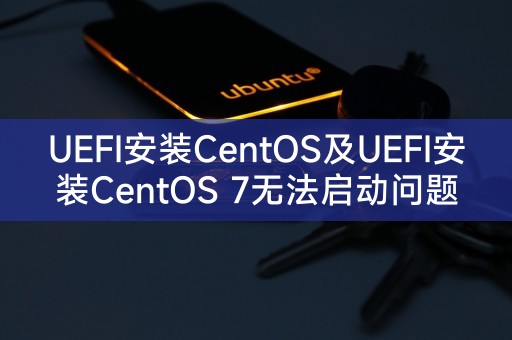
php editor Apple brings you a study on the issue of UEFI installation of CentOS and UEFI installation of CentOS 7 that cannot be started. UEFI is a new generation firmware interface, and CentOS is a popular Linux operating system. This article will explain how to install CentOS on a UEFI system and explore common issues that may cause a UEFI installed CentOS 7 to fail to boot. By reading this article, you will get detailed guidance on installing CentOS with UEFI and learn how to resolve boot issues you may encounter.

The process of UEFI installation CentOS is different from the traditional BIOS installation method. Make sure your computer supports UEFI boot and has been turned on. In UEFI mode, you need to make a CentOS installation USB disk or CD that supports UEFI booting. In UEFI mode, when the computer starts, it will directly load the EFI boot program in the USB disk or CD, and then enter the CentOS installation interface.
During the installation process, you need to select the UEFI boot mode for installation. The installation program will automatically identify and configure the UEFI boot program. For CentOS installed in UEFI mode, its boot program and file system need to be in GPT format. Rather than the traditional MBR format.
If you installed CentOS 7 in UEFI mode, but cannot start, there may be the following reasons:
1. Boot program Configuration error: There may be a problem with the configuration of the UEFI boot program, causing the system to fail to start normally. You can try to reconfigure the boot program or repair the boot program.
2. System files are damaged: During the installation process, system files may be damaged due to various reasons, causing the system to fail to start normally. You can try to repair or reinstall the system.
3. Hardware failure: Hardware failure may also cause the system to fail to start normally. You need to check the hardware and repair the failure.
No matter what kind of problem occurs, you can try to make a CentOS bootable USB disk or CD and enter rescue mode to repair or reinstall the system.
The problem that UEFI installs CentOS and UEFI installs CentOS 7 cannot start is a problem we may encounter when using the LINUX operating system. Through the discussion in this article, we understand the UEFI installation CentOS process and possible reasons and solutions for failure to start. I hope the content of this article can help you solve these problems smoothly and make your LINUX system run normally.
In a LINUX system, you can use the command line tool "lsblk" to view all block devices (such as hard disks, U disks, etc.) in the system and their For partition and mounting status, just enter the "lsblk" command in the terminal to display a list of all block devices. This command is very practical and can help you quickly understand the disk usage of the system.
The above is the detailed content of Exploring the problem of unable to start when installing CentOS through UEFI and CentOS 7 when installing through UEFI. For more information, please follow other related articles on the PHP Chinese website!
 How to solve 500error
How to solve 500error What does full-width and half-width mean?
What does full-width and half-width mean? What are the definitions of arrays?
What are the definitions of arrays? The role of barcodes
The role of barcodes What should I do if my computer starts up and the screen shows a black screen with no signal?
What should I do if my computer starts up and the screen shows a black screen with no signal? cad2012 serial number and key collection
cad2012 serial number and key collection How to obtain the serial number of a physical hard disk under Windows
How to obtain the serial number of a physical hard disk under Windows Unable to locate program input point in dynamic link library
Unable to locate program input point in dynamic link library



